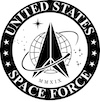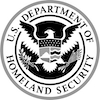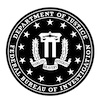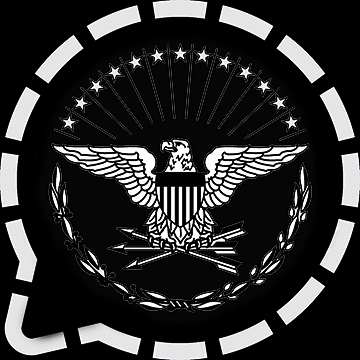Amazon's Safety Gear Deals Expose Silicon Valley's Latest Fiasco
 Photo: Unknown
Photo: Unknown
In an audacious move that has left Silicon Valley stalwarts in a whirlpool of confusion, Amazon has unveiled a fresh line of safety gear, an array that includes everything from steel-toed boots to neon hazard vests and high-tech helmets equipped with augmented reality (AR) features. The new product line, boldly named “Amazon DefendTech,” is being hailed as the ultimate testament to the company’s far-reaching tentacles, thriving in the unlikeliest of market spaces.
“Amazon has always been at the forefront of innovation,” explained Amazon’s Chief of Product Innovation, Dr. Wilbur T. Farnsworth. “Our latest line, DefendTech, is an answer to the long-standing cry of Silicon Valley’s workforce. They’ve been pleading for a solution to the overwhelming workplace hazards of over-caffeination, furious keyboard typing, and the occasional paper cut.”
While initial reactions from the tech industry have ranged from bemused chuckles to outright bewilderment, some within Silicon Valley have started to seriously question the potential implications of these products. Concerns have been raised that DefendTech could be Amazon’s first step toward a complete monopolization of the burgeoning “tech safety” market, an industry that has, until now, been mainly comprised of ergonomic chairs and wrist rest pads.

Farnsworth further explained, “Our steel-toed boots are the perfect antidote for the under-desk computer tower toe stubbing epidemic that is sweeping the corporate offices of America. The neon hazard vests will ensure maximum visibility, even in the dimly lit, open-concept workspaces that are so popular today. As for the AR helmet, it’s not just a safety tool - it doubles as a wearable, hands-free device that provides real-time data analytics while simultaneously protecting users from the perilous danger of falling post-it notes.”
Our latest line, DefendTech, is an answer to the long-standing cry of Silicon Valley's workforce.
The sudden announcement from Amazon has led to a frenzied scramble among tech giants, with many hurriedly reassessing their own safety protocols and strategies. It’s a situation made even more ludicrous by the fact that despite the alarm, there’s no actual physical danger present in these tech monoliths’ workplaces.

As we dive further into this perplexing development, one must ask, is this a genuine attempt by Amazon to address an overlooked niche in the market, or a clever ploy to corner yet another sector? And how will the rest of Silicon Valley react to these developments? Only time will reveal the true motives behind this latest move from the omnipresent retail giant. To be continued…
In response to Amazon’s bold foray, other tech giants have begun to innovate their own versions of high-tech safety gear. Google has been reportedly developing a state-of-the-art ergonomic chair with inbuilt sensors to detect unhealthy sitting postures. Meanwhile, Apple was rumored to be designing a line of sleek, minimalist safety goggles that seamlessly integrate with iPhone’s facial recognition feature, offering users a blend of safety and convenience.
The neon hazard vests will ensure maximum visibility, even in the dimly lit, open-concept workspaces that are so popular today.

However, not everyone in Silicon Valley is on board with this safety gear trend. Elon Musk, CEO of Tesla and SpaceX, was quick to dismiss the need for such products. “The most significant hazard in our office is probably the risk of tripping over one of our office dogs. Perhaps Amazon can develop a solution for that too,” he jokingly suggested.
The ripple effect of Amazon’s audacious move has spread far and wide, crashing onto the shores of Wall Street. Investors have been left scratching their heads, trying to make sense of these unexpected market dynamics. Shares of ergonomic chair companies and wrist rest pad manufacturers tumbled, while Amazon’s stock prices soared, underlining the colossal influence Amazon wields.
Interestingly, the workforce at the heart of this storm appears to remain mostly unfazed. A survey conducted by the National Bureau of Silicon Valley Statistics suggested that over 80% of employees considered the threat of over-caffeination and furious typing injuries to be a part of their daily grind. Only a small fraction viewed Amazon’s DefendTech as a potential game-changer in their workspace.

“We signed up for this. A high-tech helmet isn’t going to change the exhilarating chaos of Silicon Valley,” voiced one anonymous employee. “But if that neon vest comes in different colors, I might get one to stand out in the next board meeting.”
As the dust settles on Amazon’s surprise announcement, the company’s gargantuan footprints on the tech safety market seem to be an audacious yet fitting move in their relentless quest for market dominance. And while Silicon Valley’s veterans grapple with this unprecedented shift, Amazon’s DefendTech stands tall, a neon-clad beacon in the increasingly absurd landscape of tech safety.
In the final analysis, whether Amazon’s venture into this niche market is a stroke of genius or an ambitious misfire will be determined by the invisible hand of market dynamics. Until then, Silicon Valley’s workforce may need to brace themselves for a future where the greatest defense against the perils of their trade might come in the form of steel-toed boots, AR helmets, and neon hazard vests. Only in Silicon Valley, folks.






